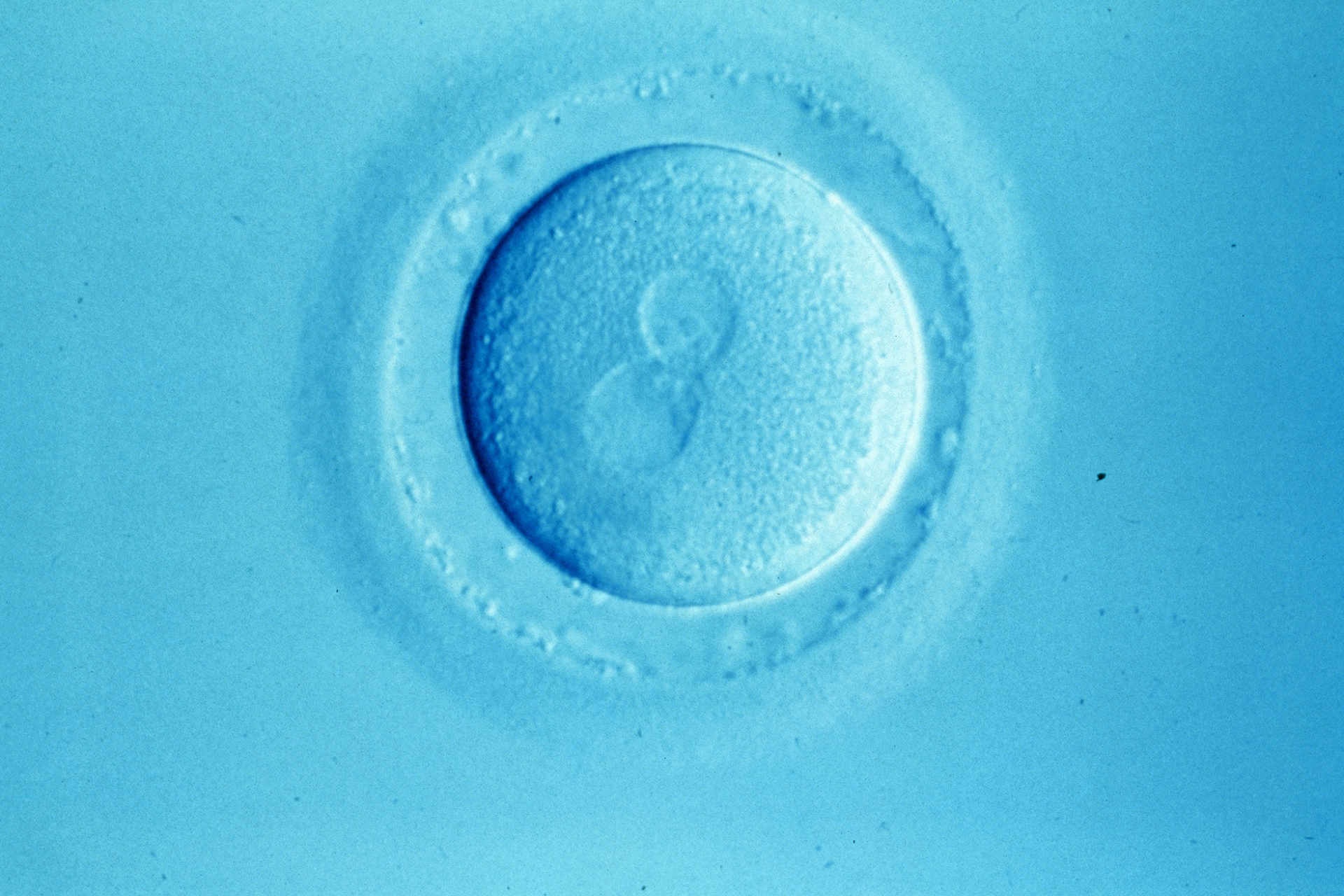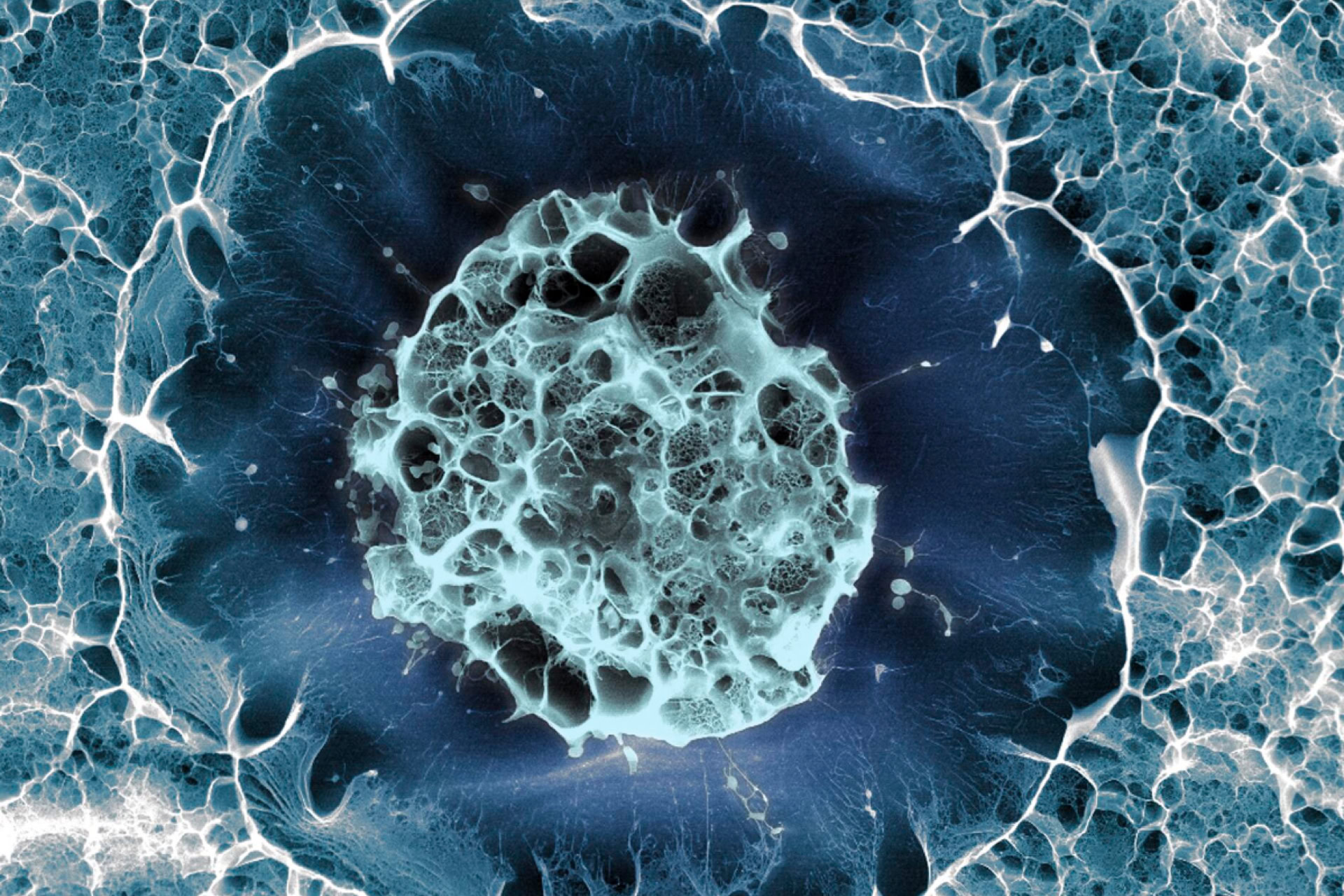What does it mean to be human?
It's not a question I'd given much thought until hearing science writer Philip Ball's talk on 'How to Grow a Human'.
It was a warm May evening in an auditorium at the Royal Institution in London. The lights dimmed and a fluorescent web-like image emerged on the screen. Ball jumped to the stage and eagerly declared that this was an image of his neurons grown in a lab from cells taken from a piece of his arm – his 'mini-brain'.
He told us that this inspiring experience brought him to the realisation that 'our cells and tissues are more plastic than expected' – with every cell in our bodies having the potential to give rise to different cells, tissues or an entirely new person.
Ball's positive energy immediately captured the audience's attention. His 20-plus years in science communication and reputation for tackling weird and controversial scientific topics showed in his emotive opening.
The talk continued with a well-crafted lesson in embryo development and focused on the 2016 Nobel-prize-winning research of Professor Shinya Yamanaka – who discovered that it's possible to reprogramme mature skin cells to become immature stem cells, which, in turn, can grow into any type of cell within the body.
Ball then discussed his involvement in Created Out of Mind – a project that aims to understand dementias through science and the creative arts. Ball explained how he donated his skin cells to 'The Brains in a Dish Team' and saw his very own neurons develop into a mini-brain in a dish.
The level of scientific detail up to this point was ideal for a non-scientific, family-friendly audience. Ball effortlessly simplified the subject to maintain everyone's attention including that of the children in the front rows.
In the second half, we learned that research on organoids is moving towards development of bioengineered organs, offering an alternative for whole-organ transplantation. And discovered how, in 2017, a research group at the Massachusetts Institute of Technology grew functioning artificial human liver 'seeds' in a mouse.
Ball joked that obviously a mouse is too small to grow an entire human liver, and then asked a challenging question: should we consider growing artificial human organs in another animal such as a pig? This already had the audience feeling uneasy and even more so when he suggested growing an entire human body without feelings and consciousness as a 'storage' for organs.
At this point, I felt that the ethics and safety were covered too quickly considering the seriousness and potentially controversial nature of the topic. Also, by giving too many examples of the use of organoids – everything from studying Neanderthal-like brains to cancer – I think Ball missed an opportunity to expand on his personal motivation and experience in having his mini-brain grown in the lab.
Towards the end, Ball focused on stem-cell derived gametes and embryos and how in 2016 Professor Mitinori Saitou's research group at Kyoto University, used stem cells to reproduce the full mammalian female germline cycle in a dish.
We heard about the potential benefits of artificial gametes in one day providing a 'limitless egg supply from a scrap of skin' and giving same-sex couples the chance to have a baby with the genetic material of both parents. We also learned how artificial embryos or embryoids, constructed from stem cells, are allowing scientists to study development beyond the 14-day limit.
Ball went on to describe a future reminiscent of the film Gattaca, where parents could create vast numbers of gametes and embryos and screen or genetically edit them, using genome editing technologies such as CRISPR, to achieve the 'perfect' embryo. He joked that IVF might eventually become the default method of reproduction, putting an end to sex.
Reassuringly, Ball did end on a serious note: the need for 'clear and strong' legislation from the Human Fertilisation and Embryology Authority (HFEA) and international collaboration to discuss the ethics, regulation and safety of human genome editing. He also emphasised that 'a huge amount of testing is needed' and should not be done without first understanding the exact implications of a genetic modification and potential off-target effects.
The Q&A session covered broad topics from cloning pets to growing new limbs like a salamander. However, the most thought-provoking included how human evolution might be altered and whose ethics would prevail.
Ball agreed that genetic technologies may alter evolution, but noted that this is something humans have been taking charge of since civilisation began. In answering the second question, he praised the work of the HFEA and the late Baroness Mary Warnock, former patron of PET (which publishes BioNews), for setting an example: providing clear and strong frameworks that promote research within defined boundaries.
Although Ball delivered a fascinating account of past research, for me, the talk lacked structure and depth. With so many topics covered it was difficult to get a sense of what's happening in the field right now and where it's going. What's more, it was easy to get caught up in a sense of 'everything is possible' because the feasibility, safety and ethics were overlooked.
Negatives aside, I think Ball succeeded in what he set out to achieve: to make us think about what it means to be human. How far can we push the design constraints of the human body? Where are the boundaries of where life starts and ends? And finally, how do we define ourselves as humans?





Leave a Reply
You must be logged in to post a comment.